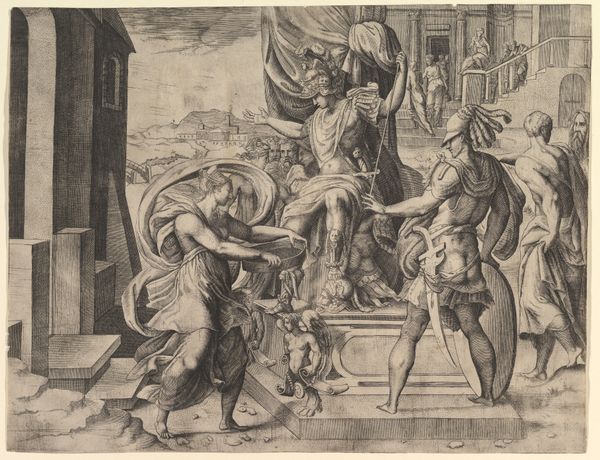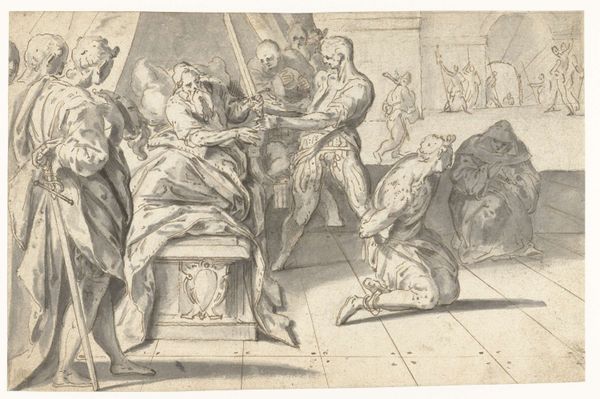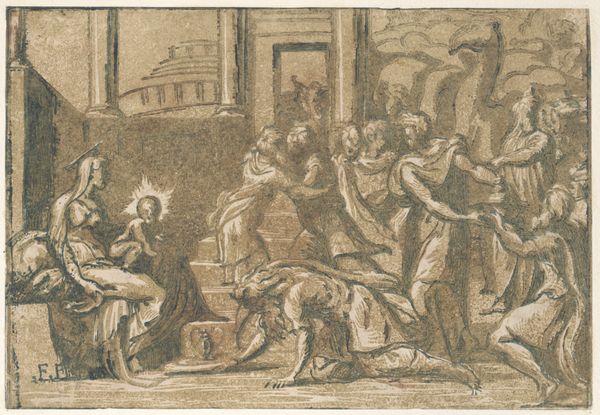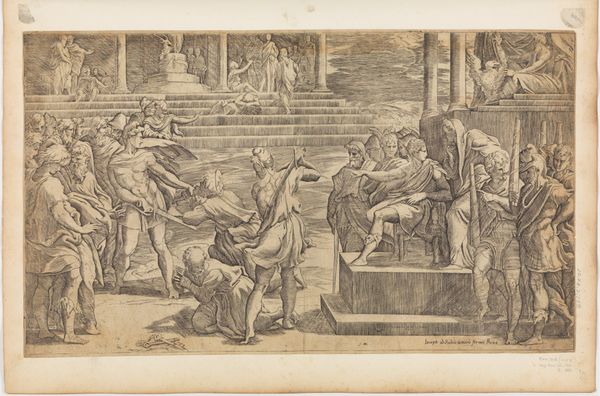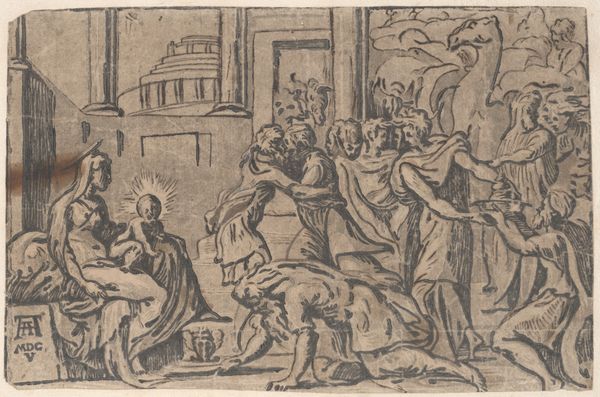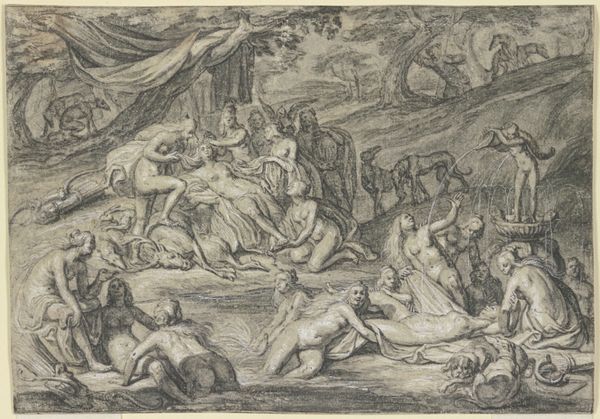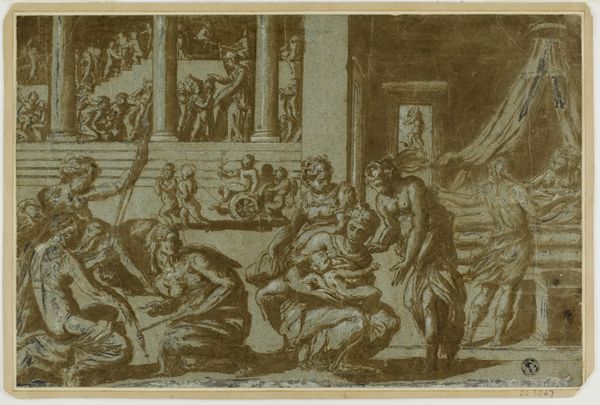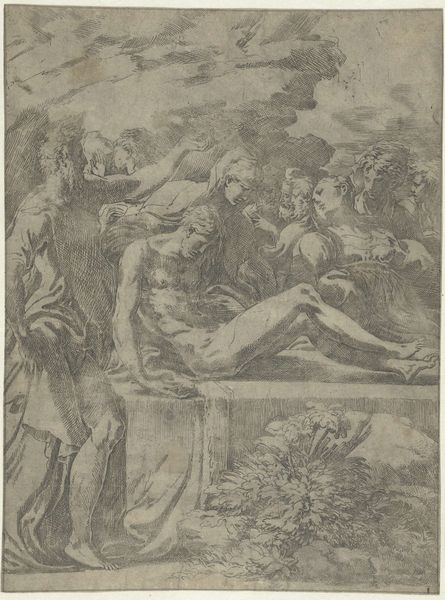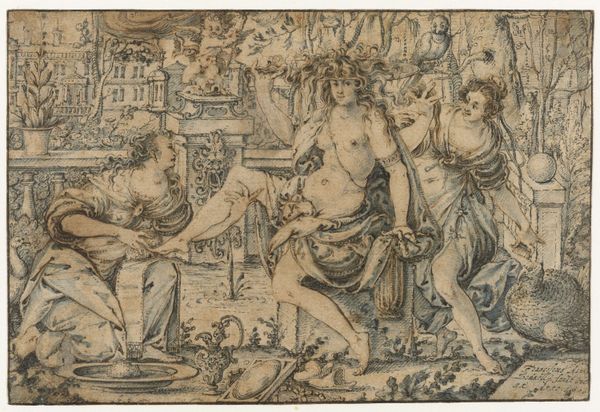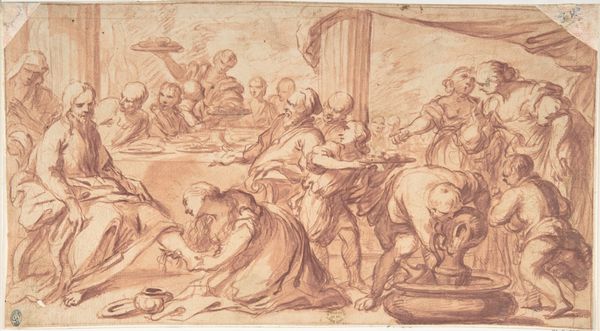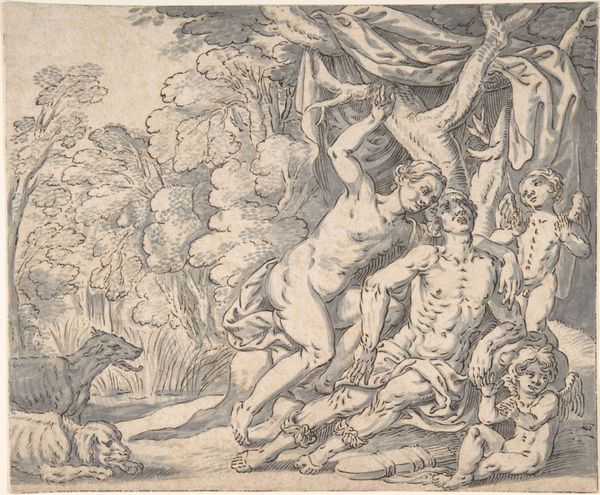
drawing, print, paper, ink
#
drawing
#
ink drawing
#
ink painting
# print
#
figuration
#
paper
#
ink
#
history-painting
Dimensions: 295 × 457 mm
Copyright: Public Domain
Curator: Before us is Parmigianino’s “Martyrdom of Saints Peter and Paul,” an ink drawing now held at The Art Institute of Chicago. Editor: It's... unsettling. There's a clear depiction of violence, but the style almost sanitizes it. A cool detachment, despite the drama. Curator: Indeed. The historical context is crucial. This drawing, likely a preparatory sketch, depicts a pivotal moment for the early Christian church—the execution of two of its most important figures. But note Parmigianino's style. Editor: The way he uses ink really captures the emotional essence here. I can’t help but notice the throne or dais prominently featured on the right, figures and winged spirits seeming to tumble from its heights and recesses. It speaks volumes, especially with a seated man—possibly Emperor Nero—witnessing the brutal scene. Curator: Precisely. This isn’t merely religious art; it’s a commentary on power, specifically, how religious conviction threatens existing power structures. Consider also the positioning of the saints. Paul, often represented as more intellectual, is already on his knees. Peter, defiant. These characterizations echo historical and theological divides in our understanding of these key figures. Editor: It is fascinating how the symbols accumulate. Nero, a symbol of corrupt earthly power and pagan belief—presides passively from on high, his expression placid. The angels, a possible allusion to both Christian faith, or the fading Roman one, descend into violence. The very ink—its varying shades indicating torment and defiance—tells its own story of institutional and political conflict. Curator: Absolutely, and if we look at this artwork through an intersectional lens, the gendered dynamics cannot be ignored. Where do women find their place? Power seems firmly seated in a male, religious order of dominance, an early and painful formation of an authority dynamic still pertinent to this day. Editor: So true. Even Parmigianino's execution—the style itself—contributes to the discourse. It raises questions of whether martyrdom represents spiritual victory, resistance to oppression, or tragic, state-sanctioned, butchery. I had originally seen detachment in the figures' demeanor, and the lines depicting such drama, but your analysis brings to the forefront, the struggle and social statement in an iconic martyrdom story. Curator: It's a piece that requires active engagement. And to look to the drawing—its composition, use of iconography, historical and cultural roots—as a product of the artist’s culture, but one of ever relevant interpretation, that continues in our ever shifting society. Editor: Absolutely. Parmigianino offers us not just a glimpse into a historical event, but an insight into the timeless clash between belief and authority—represented through powerful, symbolic figures, brought together in this turbulent, inky scene.
Comments
No comments
Be the first to comment and join the conversation on the ultimate creative platform.
